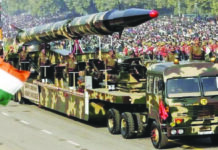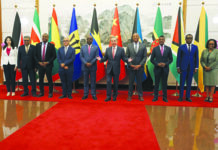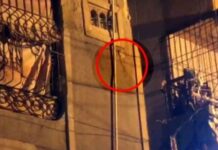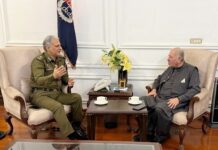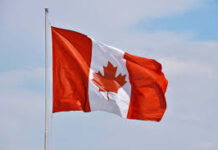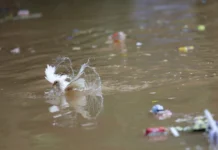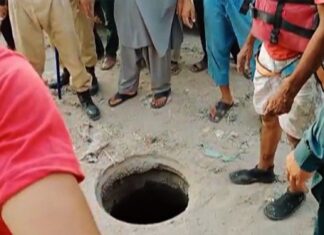Since its inception, Pakistan has been facing a challenge to foreign relations coming from the north western border. In the past, the threat of communist intrusion continued for decades unless 1989 ended the protracted Afghan-Russian war. Now, the threat is of intervention coming from an Islamic militant organization called the Tehrki-e-Taliban Pakistan (TTP).
The TTP traces its history to the Red Mosque issue in Islamabad in July 2007. Military operations made the TTP go on the run and take refuge in Afghanistan. In 2017, Pakistan started fencing the Pak-Afghan border called the Durand Line, which originally stretches from Gilgit-Baltistan in the northeast to Baluchistan in the southwest (and joins the Afghanistan-Iran and Pakistan-Iran borders). The objective of the fencing was to regulate the flow of people and goods from across the border. The TTP, however, considered the act of fencing as Pakistan’s effort to banish the organization permanently. The sense of exclusion chagrined the organization which retaliated by launching attacks on Pakistani soldiers patrolling along the fence.
The Taliban and the TTP have to understand that the Durand Line was not of Pakistan’s making. After the fall of Dacca on 16 December 1971, Pakistan has become sensitive to the issues of separatism that could harm its integrity. Pakistan no more sees a slogan soaked in separatism as the democratic right of a person, group, or community. Pakistan considers it a conspiracy hatched to disintegrate it further. Pakistan’s sensitivity is understandable and should be respected.
The TTP caused both annoyance and offence perturbing Pakistan. In its recent talks to Pakistan’s military officials, the TTP put a list of demands. One of the demands was to pull up the fence and open the Pak-Afghan border, making it as unhindered and unguarded as it used to be. The demand is not acceptable to Pakistan, the Parliament of which considers that demands be brought before it for discussion and decision. No negotiations taking place secretly or any agreement reached clandestinely with the military would be considered legitimate and effective.
The Durand Line is the border that Pakistan inherited from British India. Along with that, Pakistan also inherited the issue of Pakhtunistan, which aspired for Pakistan’s Pakhtun region joining Afghanistan’s Pakhtun region. The dream was a threat to Pakistan’s integration. The communist regimes in Kabul were loath to accept the existence of the Durand Line as the legitimate border. This was one of reasons for the popularity of the communist thought in northwest areas inhabited by the Pakhtuns. Before Partition (for example in April 1932), Peshawar experienced a bloodbath when the British came down heavily on a Pakhtun gathering reeking of a pro-communist drive.
Pakistan remained distrustful of the role of the communist regimes controlling Kabul. Pakistan perceived them fomenting trouble in its northwest. Though in August 1976, on his official visit to Islamabad, Afghanistan’s President Sardar Mohammad Daud Khan recognized the Durand Line as an international border between Afghanistan and Pakistan, the border kept on nurturing differences. Between the lines lingered on the issue of Pakhtunistan.
Even the government of Afghan Mujahideen, who were supported by Pakistan and who took over Kabul in 1992 after the end of a civil war (1989-1992), refused to recognize the Durand Line as a legitimate international border. The same was the attitude of the Taliban who took over Kabul in 1996. Each time, Pakistan was disillusioned at the turn of events but Pakistan felt relief in the fact that the governments in Kabul were not antagonistic to Pakistan. In place of communists in Kabul, Islamists were considered a better choice to dilute the issue of Pakhtunistan.
The existence of the tribal belt as Federally Administered Tribal Area (FATA) remained a lifeline for any controversy surrounding the Durand Line. The FATA was a lawless region and a hub of smuggled goods, which were supplied to the rest of the country at the cost of the existence of the local industry. Moreover, to the consternation of many, the FATA became a refuge for fugitive criminals and stolen vehicles from across the rest of the country. Further, the FATA also earned notoriety for supplying illegal local or foreign weapons to the rest of the country.
The FATA’s ungovernable standing posed a challenge of existence to Pakistan, which had been going through the ordeal of the War on Terror. Forces of the USA and of its allies were targeting FATA to destroy any hideouts of Al-Qaeda. On 27 March 2009, through his Af-Pak strategy, US President Barack Obama declared FATA part of Afghanistan for operational purposes.
Whether or not the strategy worked on the ground, the approach alerted Pakistan on the future of the FATA. Further, the strategy offered an implied forthcoming formidable challenge to Pakistan’s sovereignty. Consequently, Pakistan became willing to launch military operations in South and North Waziristan at a heavy cost in terms of both men and material. This was a time for Pakistan to decide on the future of the FATA.
Pakistan knew that the dissolution of the FATA would instigate an outcry in the Pakhtun belt but there was no other option. On 31 May 2018, through the 25th Constitutional Amendment, the FATA merged with Khyber Pakhtunkhwa. By 5 January 2022, except for only around 20 km, Pakistan had completed fencing the Pak-Afghan border, part of the Durand Line. Now, there is no going back. The TTP is fighting a losing battle.
On 15 August 2021, the Taliban returned to power in Kabul. The Taliban are also disputing the legitimacy of the Durand Line. Siding with the TTP, the Taliban soldiers have also been trying to remove the fence. This is a point of concern for Pakistan.
The Taliban and the TTP have to understand that the Durand Line was not of Pakistan’s making. After the fall of Dacca on 16 December 1971, Pakistan has become sensitive to the issues of separatism that could harm its integrity. Pakistan no more sees a slogan soaked in separatism as the democratic right of a person, group, or community. Pakistan considers it a conspiracy hatched to disintegrate it further. Pakistan’s sensitivity is understandable and should be respected.
In short, the era of unhindered to-and-fro movement across the Pak-Afghan border (part of the Durand Line) is over. The FATA is now governable through Khyber-Pakhtunkhwa. The TTP cannot use its Taliban leverage to dictate its terms to Pakistan. It is better to bring Parliament into the picture on talks with the TTP.

